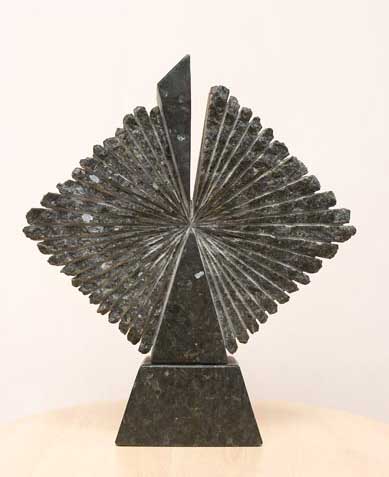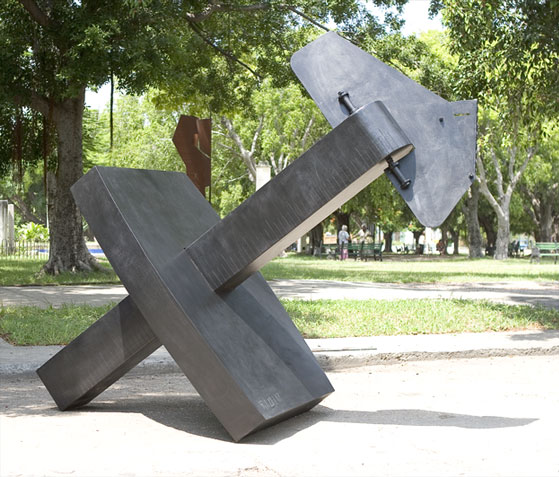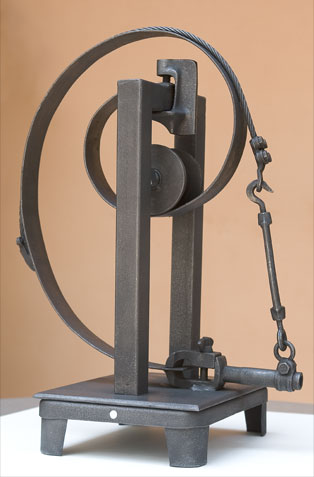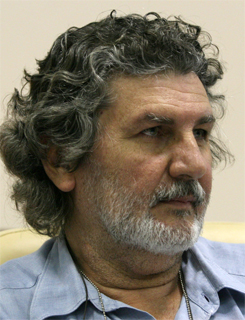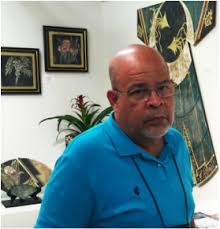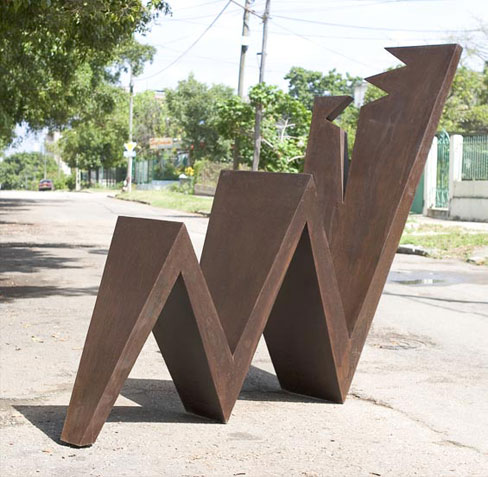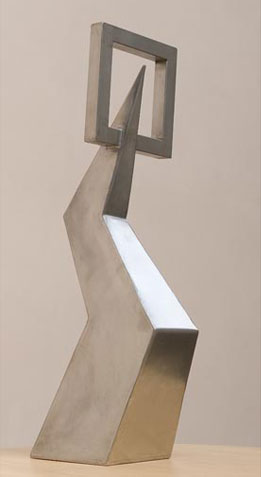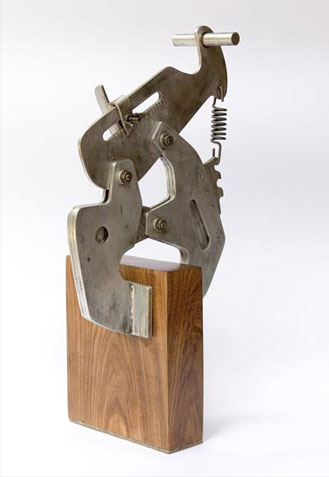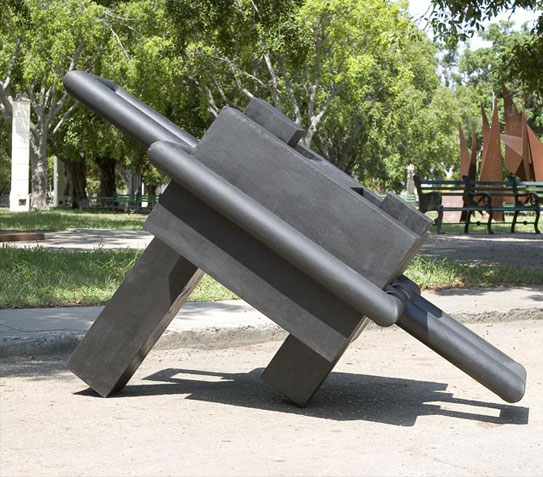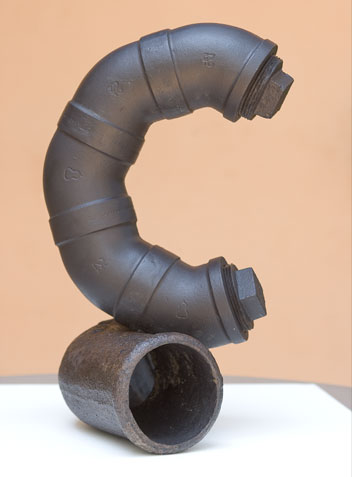Standing Firmly
Standing Firmly
Sculptural forms, particularly those that resolve in the purity of free, stylized forms, or in the open nudity of abstraction, are generally complex, slippery, difficult to face. The planes flee, the multiplicity of profiles is endless and infinite warned in this regard a very authorized voice up to a light, a shadow, a cloud, and the tremendous work trembles. All of it is incontrovertibly true, at least initially. But sculptural forms are also provocative: they are distinguished by a huge and inscrutable power of seduction.
To experience this personally, it suffices to examine some of the pieces put together by this exhibition. We hardly feel in possession of a comfortable perspective that apparently includes it, because it favors the understanding of what we had assumed as totality up to that moment when the elusive condition of the volumes in their unforeseen alternation of full and empty spaces, and the escapade of the lines that ensure their continuity behind the ideal plane we just thought we had found, urge us to move. Out of pure instinct one tends to approach, one bends, stands up again, walks backwards a little, then walks away and turns, returning in search of another watching point, probably more open or more precise; only that, in that second tour, revisiting what we already thought was known, new, no less unattainable angles are revealed.
And speaking of interpretations, beyond the enjoyment of the strict vision, the determination may turn chimerical, but attainable. Titles normally come in our help as a far from despicable pretext because of what they usually reveal in terms of support and intention. Most prudent, however, is to let oneself be guided by the sovereign flow of ideas and make up the possible explanations, if we consider them necessary, knowing they are well protected under the weight of the initial sensations. Let us try our luck again in front of the pieces, because only they can show us the keys to any attempt of understanding.
Standing before the piece by Tomás Lara, for example, we succeed to identify, as suggestive duality, the eternal counterpoint between industrial and inborn. Here is a proposal, whose undeniably virtuous making, its arrogant structure and its monochrome soberness transparent that important dose of judicious premeditation that distinguishes the sculptor in the consummation of the controlled volume. But it will not take long before the sourness of the structure, its strength, its superb manner of involving and submitting the space appear, warning us then that it is precisely in that challenging gallantry where the best of his aesthetic expression resides.
On the contrary, in the neighboring proposal by Rafael Consuegra stand out other qualities. The most immediate one is the ludicrous proclivity to the insinuation of opposite meanings underlying in that intricate communion of plates, cylinders and tensors that create such peculiar self portrait. His opposition to any visual predisposition that reveals itself as authoritarian and severe jumps to the eye; in this work we perceive by intuition a posture of systematic questioning, of uninhibited attitude of subversion before any hint of immobility intended to become permanent.
On the other hand, facing José Villa’s work what best illuminates from his sculptural will is that Brancussian feature expressed in the indulgence toward the material. Villa reduces the ascending vocation of some very powerful ingots by making them succumb in categorical zigzag at ground level, but the respect for the material the appreciation for the complexion granted by nature to each and every one leaves the door open for the steel to express, free of embellishment, its tactile and admirable strength.
Eliseo Valdés leads us into a unique constructive grammar whose codes have enabled him to transfer to the letter (not the sentence or even the word) the infinite semantic potentiality of the sign. The letter is a visual pretext, but it is also a metaphor of the city, and, as such, shelters the expansion, growth and multiplicity of intertwined meanings in a vigorous H that, in addition to being nucleus and structure, is also evocation and tribute.
Lastly, Juan Quintanilla the only one among the sculptors present in the show who prefers marble to metals stands out precisely because of the long scope of the strictly sensorial evocations in his work. The piece awaiting us in the farthest of the halls delights because of its exquisite texture, the terse and refractory surface and the erotic impulse it irradiates, both from the extremes that rise as promise of an embrace and in the central groove that transmutes into a uterus or throat.
We could also risk to express a less subjective, more rational interpretation based on basic, essential concepts, akin to a great extent to the ideas of our sculptors: spatial construction, intervened material, referent volume, silent exploration of the forms. But even these ideas would not be totally deprived of emotions that contaminate reason. Is it then worthwhile to ask ourselves (together with Picasso) why do we insist in understanding art. Why don’t you try to understand the singing of birds? wrote the Maestro. Why do we love the night, the flowers, everything that surrounds us, without trying to understand it?
Guy Pérez Cisneros had already warned us that the shock that sculpture produces in us is an experience that is hard to analyze. From all the arts, the critic said, sculpture succeeded alone and spontaneously, in all ages, in attaining what it took the others so long: the abstraction, and therefore, the far-reaching. Before being this or that in the first place and above all we know at once, by revelation, that sculpture is Hence the impossibility of apprehending it hence its non-Satanic, but Lucifer-like, Prometheus-like value. And in truth, these sculptures that are currently in exhibition at Villa Manuela stand firmly: the disconcerting almost always becomes seductive experience.
María de los Ángeles Pereira
September 2007
